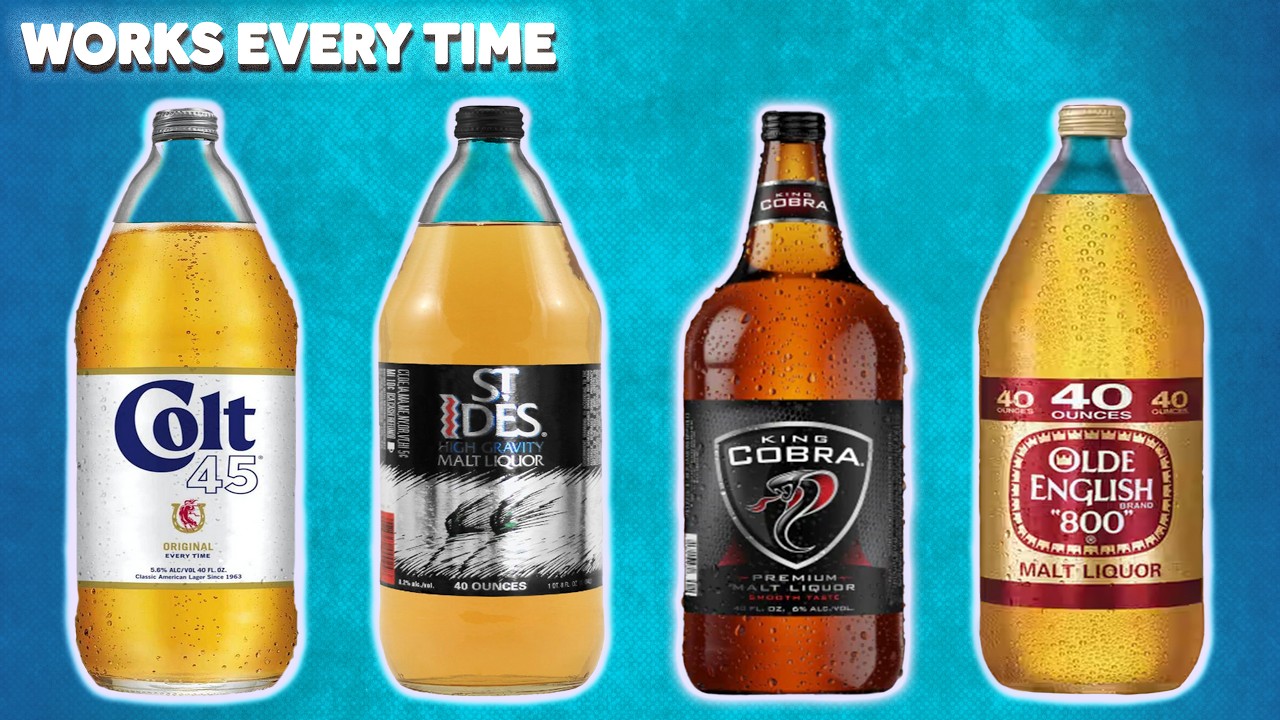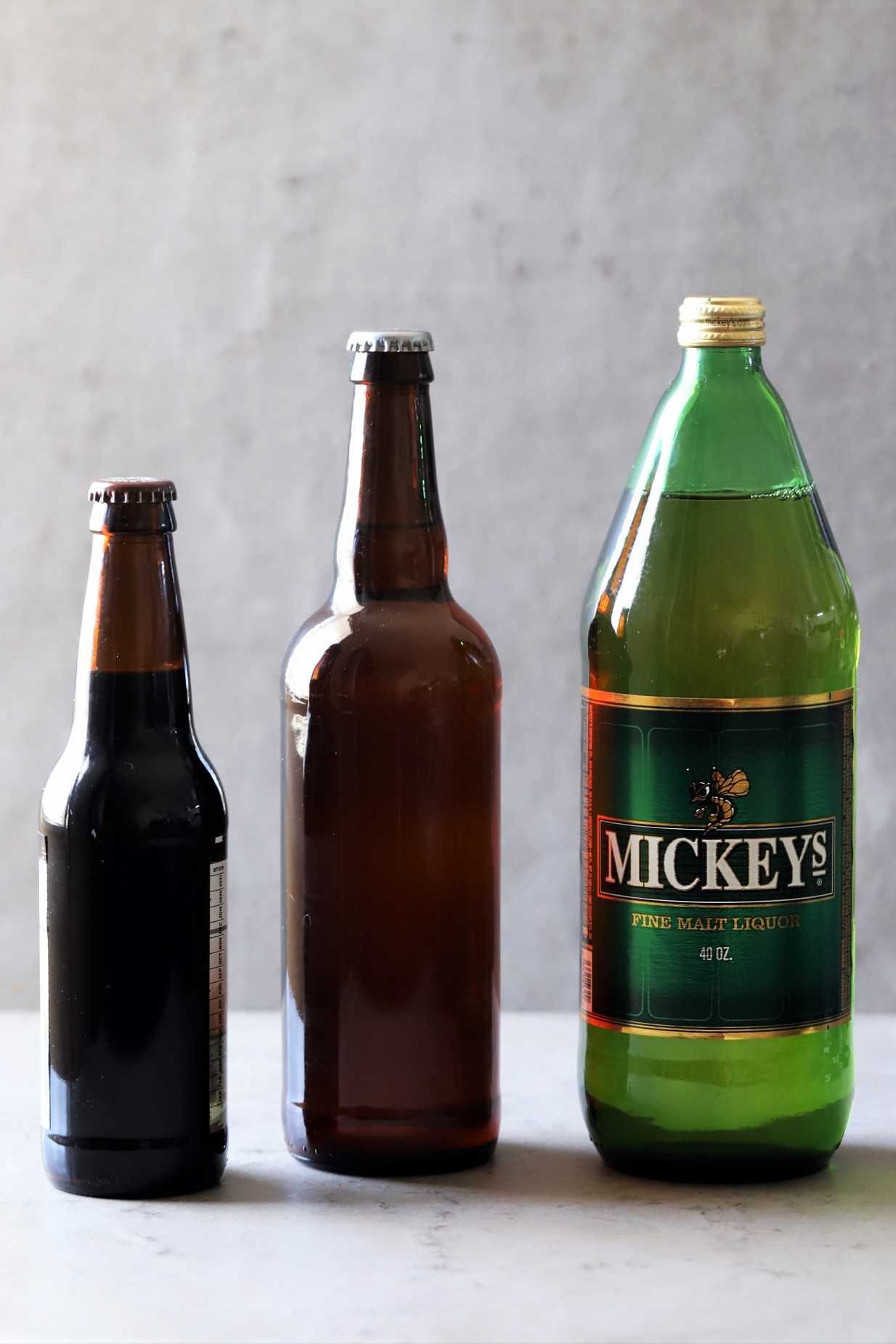Introduction

Malt liquor and beer are two popular alcoholic beverages that have distinct characteristics and styles. While both beverages are brewed using malted barley, they differ in terms of ingredients and alcohol content. This article will explore the key differences between malt liquor and different beer styles, such as lagers, ales, and stouts. By understanding these differences, readers will gain insight into the unique qualities and flavors that each drink offers. Whether you prefer a refreshing lager or a rich malt liquor, this article will help you make an informed choice based on your personal preferences.
Background On Malt Liquor And Beer
Malt liquor and beer have been popular alcoholic beverages for centuries. Beer, the oldest known fermented drink, dates back thousands of years and has been enjoyed by cultures around the world. It is brewed using malted barley and various other ingredients, such as hops, yeast, and water. Malt liquor, on the other hand, emerged in the United States during the mid-20th century as a stronger, sweeter alternative to traditional beer. It is brewed using a combination of malted barley and corn, which gives it a distinct flavor profile. Both malt liquor and beer have their own unique history and cultural significance in the world of alcoholic beverages.
Key Differences Between Malt Liquor And Beer Styles
Malt liquor and beer may both be alcoholic beverages, but they have distinct differences in terms of flavor, brewing process, and cultural associations. Here are the key differences between malt liquor and beer styles:
- ABV: Malt liquor typically has a higher alcohol by volume (ABV) content, ranging from 6% to 10%, compared to beer which usually ranges from 4% to 6%.
- Flavor profile: Malt liquor has a sweeter, fuller-bodied flavor profile due to the addition of corn in the brewing process, while beer can have a wider range of flavors depending on the style.
- Consistency: Malt liquor tends to be thicker and more syrupy in consistency compared to beer, which has a lighter and more effervescent mouthfeel.
- Cultural connotations: Malt liquor has often been associated with lower-priced, lower-quality options, while beer has a wider range of offerings and associations with socializing and craft beer culture.
In summary, malt liquor and beer styles differ in terms of ABV, flavor profile, consistency, and cultural connotations, offering unique options for different preferences and occasions.
Lager Beers

Lager beers are a popular style of beer known for their crisp and clean flavor. They are typically brewed with bottom-fermenting yeast at lower temperatures, resulting in a smoother taste. Lager beers are characterized by their light to medium body, and they often have a pale golden color. Some well-known lager beer brands include Budweiser, Heineken, and Stella Artois. Whether you’re enjoying a refreshing pilsner or a smooth Märzen, lager beers offer a refreshing and enjoyable drinking experience. So, next time you’re looking for a light and easy-drinking beer, reach for a lager.
Characteristics Of Lager Beers
Lager beers are known for their distinct characteristics. They have a light to medium body and a pale golden color. One of the defining features of lager beers is their crisp and clean flavor, thanks to the use of bottom-fermenting yeast and lower fermentation temperatures. These beers are typically well-carbonated and have a smooth mouthfeel. Lager beers are often associated with refreshing and easy-drinking qualities, making them a popular choice for those seeking a lighter beer option. From pilsners to Märzens, lager beers offer a wide range of flavors and styles to suit different preferences.
Popular Lager Beer Brands
Some of the most popular lager beer brands include:
- Budweiser: Budweiser is known for its smooth and crisp flavor, making it a favorite among lager beer enthusiasts worldwide.
- Heineken: Heineken is a well-known Dutch lager beer brand, famous for its distinctive green bottle and balanced taste.
- Stella Artois: Stella Artois is a Belgian lager that offers a slightly sweet and malty flavor, with a clean and refreshing finish.
- Dos Equis: Dos Equis, a Mexican lager beer brand, is known for its smooth and light-bodied taste, making it perfect for outdoor gatherings and parties.
- Coors: Coors is an American lager beer brand that boasts a clean and crisp flavor profile, making it a popular choice for casual beer drinkers.
These brands represent just a few of the many lager beer options available on the market, each offering its own unique characteristics and flavors.
Ale Beers

Ale beers are a distinct category of beer known for their unique attributes and flavors. Unlike lager beers, ale beers are fermented at warmer temperatures, resulting in a fruity and robust character. They often exhibit a range of flavors, including notes of caramel, toffee, and even tropical fruits. Ale beers also tend to have a higher alcohol content, typically ranging from 5% to 7%. Popular varieties of ale beers include Pale Ales, IPAs, and Stouts. These beers are highly favored among craft beer enthusiasts for their complexity and bold flavors.
Attributes Of Ale Beers
Ale beers are known for their distinct attributes that set them apart from other beer styles. Some key characteristics of ale beers include:
- Fermentation: Ale beers are fermented at warmer temperatures, typically between 60 to 75 degrees Fahrenheit, which results in a faster fermentation process compared to lagers.
- Flavor Profile: Ales offer a wide range of flavors, from fruity and robust to malty and caramel-like. They can also exhibit notes of toffee, spice, and even tropical fruits.
- Complexity: Ale beers often have a complex flavor profile, with layers of different flavors and aromas that develop as the beer ages.
- Higher Alcohol Content: Ales generally have a higher alcohol content, typically ranging from 5% to 7%, although this can vary depending on the specific style.
- Versatility: Ales can be made in various styles, including Pale Ales, IPAs, Porters, and Stouts, offering a diverse range of options for beer enthusiasts.
Notable Ale Beer Varieties
Notable Ale Beer Varieties: Ale beers come in a wide variety of styles, each offering its own unique characteristics. Some notable ale beer varieties include:
- Pale Ales: Known for their balance of hop bitterness and malt sweetness, pale ales are a popular choice among beer enthusiasts.
- India Pale Ales (IPAs): IPAs are known for their strong hop character and bold flavors, often showcasing citrusy, floral, or piney notes.
- Porters: Porters are characterized by their rich, dark malt flavors, often with hints of chocolate, coffee, and caramel.
- Stouts: Stouts are typically dark in color with a smooth and creamy texture. They often feature flavors of roasted malt, chocolate, and coffee.
- Wheat Ales: Wheat ales are light and refreshing, with a smooth mouthfeel and subtle flavors of wheat and spice.
These notable ale beer varieties offer a range of flavors and styles to cater to different preferences and occasions.
Stout Beers

Stout beers are a distinct style of beer known for their dark color and rich, robust flavors. They are brewed with roasted malt, which gives them a deep, coffee-like taste, along with notes of chocolate and even hints of caramel. Stout beers have a smooth and creamy texture that sets them apart from other beer styles. They are often enjoyed during colder months or as a dessert beer due to their full-bodied and indulgent nature. Some popular stout beer options include Guinness, Russian Imperial Stout, and Milk Stout. Stout beers offer a unique and satisfying experience for beer enthusiasts.
Distinctive Features Of Stout Beers
Stout beers are known for their distinct characteristics that set them apart from other beer styles. Here are the key features of stout beers:
- Dark color: Stout beers have a deep, opaque color, ranging from dark brown to black. This is achieved through the use of roasted malt during the brewing process.
- Rich flavors: Stout beers offer a complex flavor profile, often showcasing notes of roasted coffee, bittersweet chocolate, and hints of caramel. They have a robust and bold taste that appeals to those seeking intense flavor experiences.
- Smooth and creamy texture: Stout beers have a smooth and velvety mouthfeel, thanks to their higher levels of protein and carbonation. This creamy texture enhances the overall drinking experience.
- Full-bodied: Stout beers are known for their full-bodied nature. They have a thicker consistency compared to lighter beer styles, providing a satisfying and indulgent drinking experience.
- Versatility: Stout beers come in various sub-styles, such as dry stout, sweet stout, oatmeal stout, and milk stout. Each sub-style offers its own unique flavor profile and characteristics, catering to different preferences.
Stout beers are a favorite among beer enthusiasts who appreciate their intense flavors, creamy texture, and full-bodied nature.
Beloved Stout Beer Options
Beloved Stout Beer Options:
Stout beers have gained a loyal following due to their rich and robust flavors. There are several beloved stout beer options that enthusiasts rave about. Some notable choices include:
- Guinness Draught: This Irish dry stout is famous for its smooth and creamy texture, with hints of roasted coffee and dark chocolate.
- Founders Breakfast Stout: This American stout is a favorite among beer connoisseurs, offering a bold and decadent combination of coffee, chocolate, and oatmeal flavors.
- Samuel Smith’s Oatmeal Stout: This classic English stout showcases a velvety smooth mouthfeel and notes of toasted oats, chocolate, and caramel.
- Left Hand Milk Stout: Known for its creamy and slightly sweet profile, this American milk stout features flavors of roasted malt, coffee, and dark chocolate.
These beloved stout beer options offer a delightful drinking experience for those who appreciate the unique characteristics of this beer style.
Malt Liquor

Malt liquor is a distinct type of beer that is often characterized by its higher alcohol content and sweeter flavor profile. It is typically brewed using a higher percentage of malted barley, which contributes to its rich and malty taste. Malt liquor is often heavier in body compared to traditional beer, giving it a more full-bodied and satisfying experience. With alcohol content ranging from 5% to 8% ABV, malt liquor offers a stronger kick than regular beer. It is important to note that malt liquor is not the same as traditional beer due to its unique brewing process and flavor profile.
Defining Malt Liquor
Malt liquor is a specific type of beer that stands out for its higher alcohol content and distinct flavor profile. It is typically brewed using a larger percentage of malted barley, which lends it a rich and malty taste. With an alcohol content ranging from 5% to 8% ABV, malt liquor packs a stronger punch than regular beer. It should be noted that malt liquor is not the same as traditional beer due to its unique brewing process and stronger flavor. Overall, malt liquor offers a unique and bold drinking experience for those seeking a stronger brew.
Malt Liquor Vs Traditional Beers
When comparing malt liquor to traditional beers, the key differences become apparent. Malt liquor, with its higher alcohol content, offers a stronger kick than traditional beers. While traditional beers are brewed solely from malted barley, malt liquor can also include corn in its brewing process. This addition of corn gives malt liquor a distinct flavor profile that sets it apart from traditional beers. Additionally, malt liquor is often associated with a bolder and maltier taste, providing a unique drinking experience for those seeking a more robust brew.
Conclusion

In conclusion, malt liquor and beer are both fermented beverages made from grains, but they have distinct characteristics that cater to different preferences and occasions. Malt liquor, with its higher alcohol content and sweeter flavor profile, offers a bolder drinking experience. On the other hand, beer provides a diverse range of styles, from light and refreshing to rich and complex, appealing to a wide range of tastes. Understanding these differences can help consumers make informed choices about their beverage preferences. Whether enjoying a malt liquor or a traditional beer, there is a brew to suit every palate.
Summary Of Malt Liquor Vs Beer Styles
Malt liquor and beer are both fermented beverages made from grains, but they have distinct characteristics that cater to different preferences and occasions. Malt liquor, with its higher alcohol content and sweeter flavor profile, offers a bolder drinking experience. On the other hand, beer provides a diverse range of styles, from light and refreshing to rich and complex, appealing to a wide range of tastes. Understanding these differences can help consumers make informed choices about their beverage preferences. Whether enjoying a malt liquor or a traditional beer, there is a brew to suit every palate.
Recommendations Based On Preferences
When it comes to choosing between malt liquor and beer, personal preferences play a significant role. For those who enjoy a strong and bold drinking experience, malt liquor is the way to go. It offers a higher alcohol content and a sweeter flavor profile. On the other hand, beer lovers can explore a wide range of styles and flavors, from light and refreshing lagers to rich and complex stouts. Ultimately, the choice between malt liquor and beer depends on individual taste preferences and the desired drinking experience. So, it’s important to experiment and find the brew that suits your palate.
FAQ About Malt Liquor Vs Beer: Comparing Beer Styles
Q: What is the main difference between malt liquor and beer?
A: The key difference lies in the alcohol content; malt liquor generally has a higher alcohol by volume (ABV) than traditional beer.
Q: How does the brewing process differ between malt liquor and beer?
A: Malt liquor is brewed with a higher proportion of adjuncts like corn or rice, which can contribute to a sweeter and slightly heavier flavor compared to beer.
Q: Are there any specific regulations or labeling requirements that distinguish malt liquor from beer?
A: In many regions, malt liquor is subject to higher taxes due to its higher alcohol content, and it may also have specific labeling requirements based on alcohol percentage.
Q: What are some common characteristics of malt liquor in terms of taste and appearance?
A: Malt liquor often has a stronger malt flavor, a slightly sweet taste, and may appear darker in color compared to many traditional beer styles.
Q: Is malt liquor considered to be a separate category or subcategory within the broader beer classification?
A: Malt liquor is typically regarded as a distinct subcategory of beer due to its unique brewing process, higher alcohol content, and specific market demographics.
